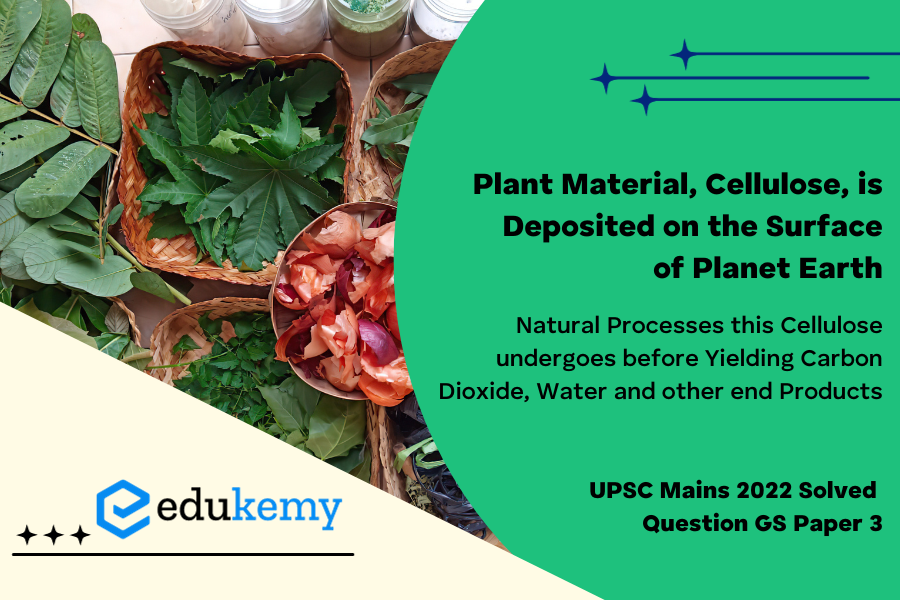Cellulose undergoes natural processes like decomposition and microbial action. Microorganisms, fungi, and bacteria break down cellulose into simpler compounds through decomposition. This process releases carbon dioxide, water, and other end products, contributing to nutrient cycles and maintaining ecological balance on Earth’s surface.
UPSC Mains General Studies Paper – 3 Mains 2022
UPSC Mains Civil Services IAS Exam Question Paper – 2022
Contents
Approach
- Introducing the key components of cellulose decomposition on the surface .
- Mention the natural process under which the cellulose undergoes for CO2 , H2O and other products
- Accordingly conclude it .
Introduction
Cellulose is a complex carbohydrate that is found in plant cell walls and is the main component of plant material. When plant material, such as leaves, branches, and stems, dies and decomposes, the cellulose it contains undergoes a number of natural processes that ultimately yield carbon dioxide,water, and other end products.
Body
- One of the key processes that occurs during cellulose decomposition is the action of microorganisms, such as bacteria and fungi. These microorganisms feed on the cellulose and convert it into simpler organic compounds, such as glucose and other sugars. This process is known as fermentation.
- Fermentation is followed by the process of respiration, in which the microorganisms further break down the glucose and other sugars to yield carbon dioxide and water. This process is known as aerobic respiration, as it requires the presence of oxygen.
- If oxygen is not available, the microorganisms may switch to anaerobic respiration, in which they produce methane and other end products instead of carbon dioxide and water.
- The natural processes that cellulose undergoes before yielding carbon dioxide, water, and other end products involve the action of microorganisms, which break down the cellulose through fermentation and respiration.

Breakdown (Cellulolysis)
- Cellulolysis is the process of breaking down cellulose into smaller polysaccharides called cellodextrins or completely into glucose units.
- The breakdown products are then used by the bacteria for proliferation.
- The bacterial mass is later digested by the ruminant in its digestive system (stomach and small intestine).
Conclusion
- These processes are an important part of the carbon cycle and play a key role in the regulation of atmospheric carbon dioxide concentrations.
- Generally, cellulose is mainly used to produce paperboard and paper. But its conversion from energy crops to biofuels such as cellulosic ethanol is under development as a renewable fuel source. The biofuel production from cellulose would be a revolutionary technology as it can fulfil India’s target in Paris Climate Agreement.
In case you still have your doubts, contact us on 8792740517.
For UPSC Prelims Resources, Click here
For Daily Updates and Study Material:
Join our Telegram Channel – Edukemy for IAS
- 1. Learn through Videos – here
- 2. Be Exam Ready by Practicing Daily MCQs – here
- 3. Daily Newsletter – Get all your Current Affairs Covered – here
- 4. Mains Answer Writing Practice – here


